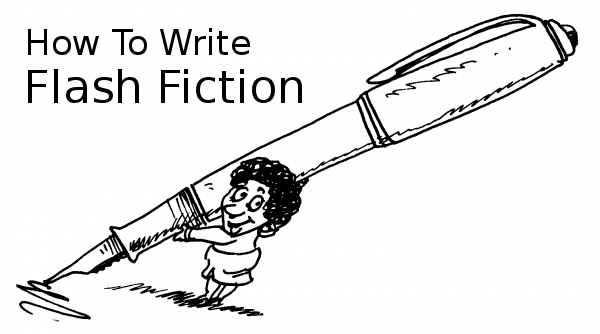how to write your first flash fiction short story

Whether you're familiar with flash fiction or not, this short how to guide to flash fiction will help get you writing in this fast and exiting style in no time.
This is a follow on to our article 'How to Write Your First Flash Fiction Short Story'
Firstly, to write flash fiction you need to understand what flash fiction writing actually is. This will depend on which definition you refer to when selecting a flash story length; most flash will fall into the 300-500 word categories. Micro flash fiction is 100 words or less, longer flash fiction is between 500 and one thousand words.
What I like about flash fiction writing is the challenge of writing a full story within the confines. I tend to be a short-distance writer, not unlike the short-distance runners who favor the 100 meter race versus the cross country 5k races. Most of my longer stories run about 1500-1800 words. I have one story that may just crest on 2000 total words without counting the title and byline. For me, flash fiction is my passion. I thrive on the challenge of the 300 word limit.
Flash fiction writing could improve your writing in general, from curtailing the bad habits such as the overuse of adjectives and other descriptor terms, to developing fresh perspectives. My writing improved, and so will yours when you write your first flash fiction story.
When writing flash fiction, as in writing any type of fiction, you must have the elements of a story. These elements are basic needs for your story-setting, plot, characters, conflict and theme. Based on your opening line, the order of these elements is irrelevant. But they do need to be included. Select the length of story you want to write and get writing!
Follow These 5 Steps To Write A Successful Flash Fiction Or Short Story:
Step One: Theme
Select a theme or topic for your story. Write about what you know and your words will flow smoothly. When you write about something you enjoy, you will achieve great success. Once you have selected a topic or theme, create the following elements:
Setting: The setting element is important as it brings a definitive aspect to your story by describing the location, time, history and/or culture. The setting gives you some background for your story. With flash fiction, less is more. Actions speak much louder than words; show us, don't tell us.
Characters: Flash fiction is quick. You must keep the characters in your story to a minimum, one or two is best. One or two sentences should be enough to flesh them out. In the case of a group setting, keep the group anonymous, and focus on the main characters.
Conflict: Unless you're writing from a narrative POV, you will need a conflict to keep the story moving or you may lose the reader. A conflict is described as opposing forces battling towards an outcome that may or may not end amicably. There are four basic types of conflict used in literary fiction; person vs. person, person vs. society, person vs. nature and ultimately the conflict of person vs. him or herself.
Step Two: Plot
In outline form, write down the concept of your story. Add the setting, plot, characters, and conflict elements in a, b, c, etc format. This will help keep your story organized. Find the lowest common denominator of your story-focus on one aspect of your idea, this will allow you to contain the story by using the direct approach.
Step Three: Step back
When you've finished writing, walk away from it. Spend time doing other things to clear your head. We are our own worst critics, and can be harder on ourselves than anyone else. You will be more objective when you read what you have written.
Step Four: Edit
Read your story from start to finish. Do not hesitate, just read. Take a few minutes to think about what you read-are there any points that seem confusing, or incomplete? Don't forget to accept the good stuff, too. The phrase that hooks you into the story will hook your reader, too. Ok, read it again. This time, use your editors pen. Yes, you can use a different color than red! Watch for gerunds and overt adjective use; sometimes we will over-describe. Strip the story down to the barest line, and then carefully add words when needed. Condense, read, and repeat. Put the story down and walk away. Take a walk, listen to music, take time away for your brain to rest.
Step Five: Review
Put your readers hat back on, pick up your story and read it. When you begin to read, errors may jump out at you as though they are 3-D images. You may have seen this during step four. However, sometimes when we edit our own work, and we can be cruel especially with ourselves, we may have inadvertently altered the true course of action. This in turn creates a stutter effect and interrupts the flow of the story. Hopefully, you've already corrected for this, if not then simply go back to step four, re-read and edit as needed.
There you have it, your first flash fiction is complete. The more you use this technique the easier it will become so keep practicing and remember to have fun.
If your having trouble coming up with some new ideas for your short story why not check out our handy list of random story ideas, be warned some of them are pretty random.
Read & Shared 603 Times.



Get In Touch
Please feel free to leave a comment to this article below.
If you run a blog and/or have posted an article which you think expands or improves on the subjects covered on this page, you can always add a trackback to it here and following moderation we'll add a link to it below.